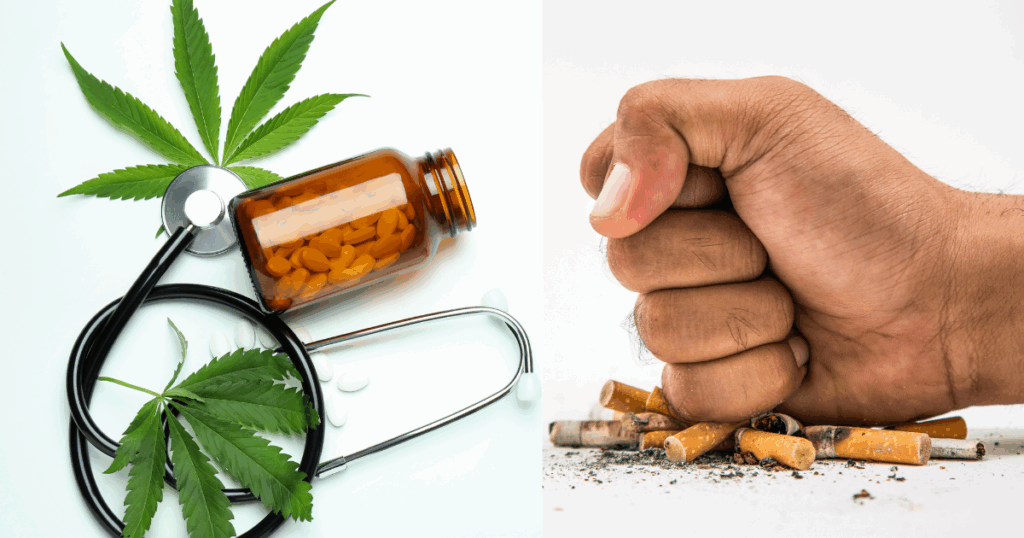A new international study published in the Journal of Cannabis Research has uncovered a connection between the legalization of medical cannabis and a decrease in the use of tobacco and amphetamines.
This research offers evidence that when people gain legal access to medical cannabis, they may be less likely to use other, more harmful substances. The findings suggest a potential substitution effect, opening up new avenues for public health policy and addiction treatment.
The study, conducted by researchers Hana Al Hallaj and Zahraa Barakat, analyzed data from 20 different countries over several years. It provides a look at how the introduction of regulated medical cannabis markets can influence patterns of substance use at a population level.
As policymakers and healthcare professionals continue to debate the role of cannabis in modern society, this research provides valuable, data-driven insights into its potential benefits.
Unpacking the Research
To understand the relationship between medical cannabis and other substances, the researchers used a sophisticated statistical approach. They analyzed panel data from 20 countries—14 that had legalized medical cannabis and 6 that had not. By comparing these groups, they could isolate the effects of legalization on substance use trends.
The study employed a fixed-effects panel regression model and a dynamic Difference-in-Differences (DiD) approach. These methods allowed the researchers to control for country-specific characteristics and observe changes over time, providing analysis of the market dynamics following legalization. The dependent variable was the annual sales volume of medical cannabis, measured in tons, which served as a proxy for market growth and consumer adoption.
The results were statistically significant. The analysis revealed that the legalization of medical cannabis was associated with an average annual increase of 26.06 tons in sales in the countries that enacted such laws.
Even when excluding the United States, a major outlier due to its large market size, the data still showed a persistent market expansion of 20.05 tons annually. This sustained growth highlights the economic relevance of creating well-regulated medical cannabis markets.
A Substitute for Harmful Substances
The study’s most notable finding is the strong negative association between medical cannabis sales and the use of tobacco and amphetamines.
The data indicates that as medical cannabis becomes more accessible and sales increase, the rates of tobacco and amphetamine use among the adult population (ages 15-64) tend to decline.
Specifically, the researchers found that a one-percentage-point increase in tobacco use was associated with an 8.581-ton decrease in annual medical cannabis sales.
Similarly, a one-percentage-point increase in amphetamine use was linked to a 10.485-ton annual decline in sales. This inverse relationship suggests that some individuals may be choosing to use medical cannabis instead of tobacco or amphetamines.
The authors of the study note, “The observed substitution effect with tobacco consumption suggests that as MC becomes more accessible, a portion of consumers may reduce tobacco use.” This potential for cannabis to serve as a substitute for more dangerous substances has significant implications for public health.
Given the well-documented health risks associated with tobacco and the addictive nature of amphetamines, finding a less harmful alternative could lead to substantial societal benefits.
Real-World Applications and Policy Implications
The findings from this study are not just academic; they have tangible real-world applications for public health and drug policy. By demonstrating that regulated medical cannabis markets can lead to a reduction in the use of harmful substances, the research provides a strong argument for creating more legal frameworks for cannabis.
For health officials, this study suggests that medical cannabis could be a valuable tool in harm reduction strategies. Instead of solely focusing on abstinence, harm reduction aims to minimize the negative consequences associated with substance use.
If individuals who are unable or unwilling to quit using substances can be encouraged to switch from more dangerous drugs to a safer alternative like cannabis, the overall public health burden could be significantly reduced.
From a policy perspective, the study highlights the importance of well-structured regulations. The researchers emphasize the need for “comprehensive legal frameworks that address licensing, production standards, and access pathways.”
Creating a responsible and sustainable market requires removing barriers to access for patients who could benefit from medical cannabis while also implementing measures to ensure product safety and quality. Enhanced consumer education is also critical to helping individuals make informed choices about their health.
Limitations of Study
It is important to acknowledge the limitations of this study. The research uses an ecological design, which means it relies on aggregate, population-level data rather than tracking individual behavior.
Consequently, the findings reveal broad-level associations and cannot establish a direct causal link for any single person. The authors warn that these results are susceptible to the “ecological fallacy,” which occurs when researchers make inferences about individuals using group-level data.
Furthermore, sales figures offer a useful proxy, but various factors beyond consumer demand can influence them. These factors include national regulations, supply constraints, and cultural attitudes.
Despite these limitations, the study provides a valuable macro-level view and contributes important evidence to the ongoing conversation about cannabis legalization.
A New Perspective on Medical Cannabis?
This international study offers a fresh, evidence-based perspective on the role of medical cannabis. By linking its legalization to reduced use of tobacco and amphetamines, the research challenges outdated stigmas and highlights its potential as a tool for public health.
As more countries and states consider legalizing medical cannabis, this study and many others about cannabis benefits’ provides a compelling reason to move forward with well-regulated programs.
The potential to reduce the harm caused by more dangerous substances, coupled with the economic benefits of a regulated market, presents a powerful argument in favor of reform. The evidence suggests that creating safe, legal access to medical cannabis isn’t just about individual freedom—it’s about building healthier communities.

















